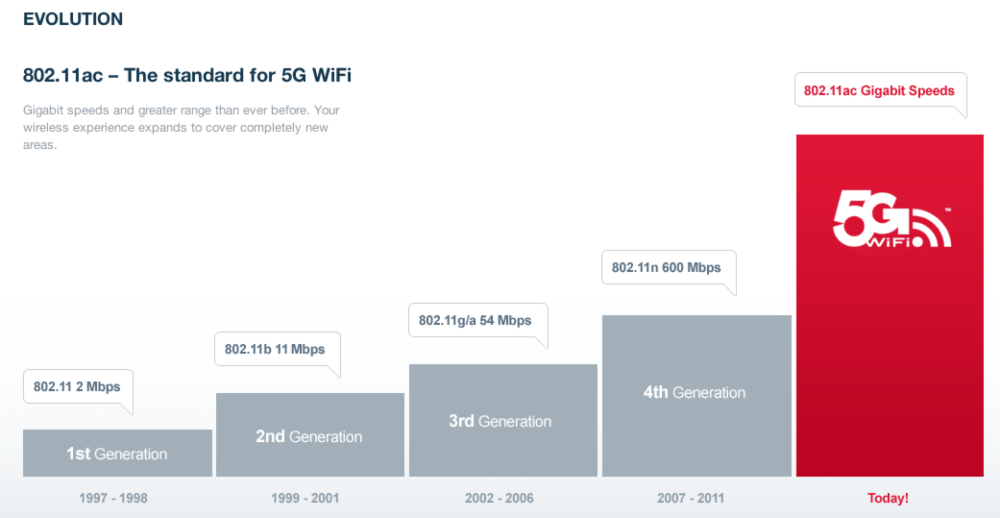With the ratification of the latest wireless standard, IEEE 802.11ac, published by the Institute of Electrical and Electronics Engineers, Inc., 5G wireless is here. It comes with substantially increased throughput capability for the rapidly increasing number of wireless devices being deployed in the network environment. Many people in the workplace or educational environment today use multiple wireless devices (laptops, tablets, smart phones, etc.). Is you wireless local area network (WLAN) ready?

The migration to 5G wireless requires you to consider more than just your wireless access points (WAPs). While it’s true that new 802.11ac compatible access points will be necessary, just buying new WAPs and replacing your existing access points will not get you to 5G. Due to the substantial increase in bandwidth capabilities, several other areas of network connectivity must also be addressed, including cable infrastructure, network switches and uplink capacity.
While the increase in wireless bandwidth will provide a substantial upgrade in your network’s availability and reliability, you must optimize your existing structured cable plant in order to achieve the increased bandwidth. Wave 1 802.11ac wireless access points offer throughput of up to 1.3 Gb/s. In order to take full advantage of this transmission rate, Category 6A (10 Gb/s) structured cabling would be necessary. Of course, it’s only at peak performance that this throughput level would be achieved and it is unlikely that this would be a regular occurrence. Therefore, you could consider Category 6 (1 Gb/s) cabling and still be able to take advantage of substantially increased performance.

Cabling upgrades become even more important when you add Wave 2 802.11ac access points into the equation. These access points provide double the bandwidth of Wave 1 devices. Now we must consider 2.6 Gb/s transmission speeds and how they affect the existing infrastructure. In order for the WAPs to achieve 2.6 Gb/s, two network connections are needed. Additional cabling will be necessary just to achieve to second connection at existing locations. So, your options here are to install two new category 6A cables allowing full use of the 2.6 Gb/s transmissions or use Category 6 cabling and limit the new network to 2 Gb throughput in order to reduce costs.
This increase in bandwidth will also require examining existing network switches and uplink connectivity. If the access point allows 2.6 Gb/s throughput and you have cable infrastructure that can carry this throughput, you need to ensure that the network switch can also communicate with the WAP at this speed. In addition, the connection on the backside of the switch to the network will have to handle multiple 2.6 Gb/s transmissions for the network to perform to expectations. Beware of network bottlenecks caused by limited uplink speeds. Your network will only perform as well as its weakest link!
Migration to 5G wireless will eventually be necessary for all networks with wireless connectivity. The rapidly increasing number of wireless devices and the inevitable obsolescence of 3G and 4G network devices will make it a reality for us all. Make sure you plan to address all of your network needs in order to have a reliable and high-functioning wireless local area network.
By David Post, RCDD, OSP

